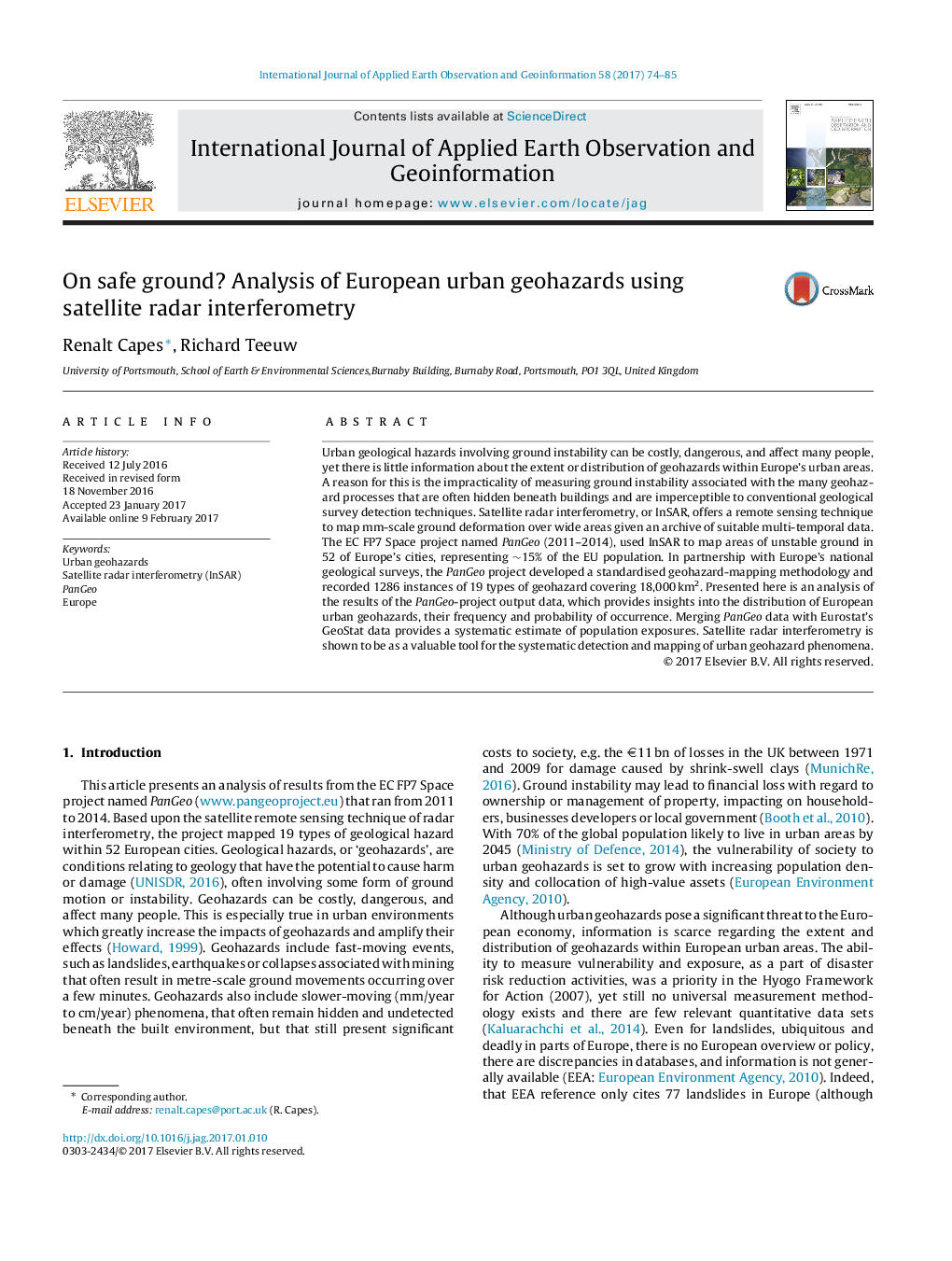| Article ID | Journal | Published Year | Pages | File Type |
|---|---|---|---|---|
| 5755448 | International Journal of Applied Earth Observation and Geoinformation | 2017 | 12 Pages |
â¢First systematic analysis of geohazards in 52 large European cities.â¢An area representing 15% of the EU population was analysed, nearly half of which was shown to be exposed to at least one type of geohazard.â¢The average city, with 1.5 million people, could have 4 types of geohazard covering an area of 186 km2, exposing 626,000 people.â¢60% of the geohazards were mapped only by InSAR, meaning they would have gone un-detected until some possibly adverse consequence was observed.â¢The study highlights the need for publicly-funded, routine, InSAR mapping and monitoring of ground deformation across the European continent.
Urban geological hazards involving ground instability can be costly, dangerous, and affect many people, yet there is little information about the extent or distribution of geohazards within Europe's urban areas. A reason for this is the impracticality of measuring ground instability associated with the many geohazard processes that are often hidden beneath buildings and are imperceptible to conventional geological survey detection techniques. Satellite radar interferometry, or InSAR, offers a remote sensing technique to map mm-scale ground deformation over wide areas given an archive of suitable multi-temporal data. The EC FP7 Space project named PanGeo (2011-2014), used InSAR to map areas of unstable ground in 52 of Europe's cities, representing â¼15% of the EU population. In partnership with Europe's national geological surveys, the PanGeo project developed a standardised geohazard-mapping methodology and recorded 1286 instances of 19 types of geohazard covering 18,000Â km2. Presented here is an analysis of the results of the PanGeo-project output data, which provides insights into the distribution of European urban geohazards, their frequency and probability of occurrence. Merging PanGeo data with Eurostat's GeoStat data provides a systematic estimate of population exposures. Satellite radar interferometry is shown to be as a valuable tool for the systematic detection and mapping of urban geohazard phenomena.
